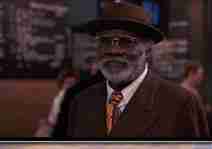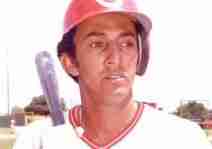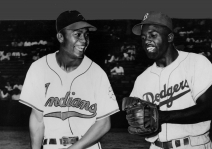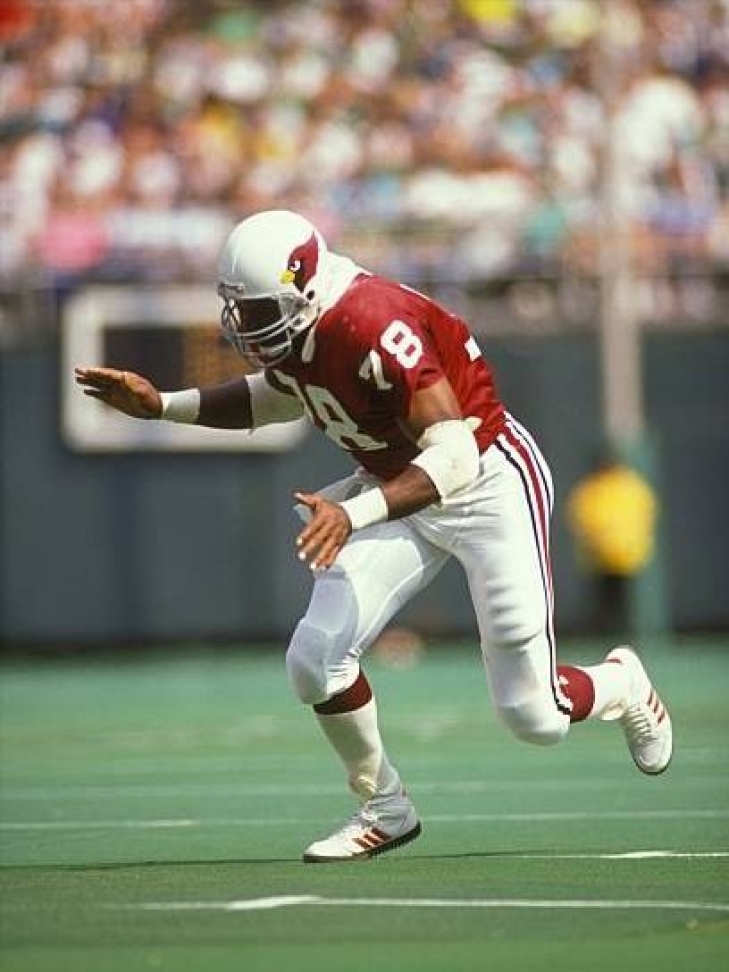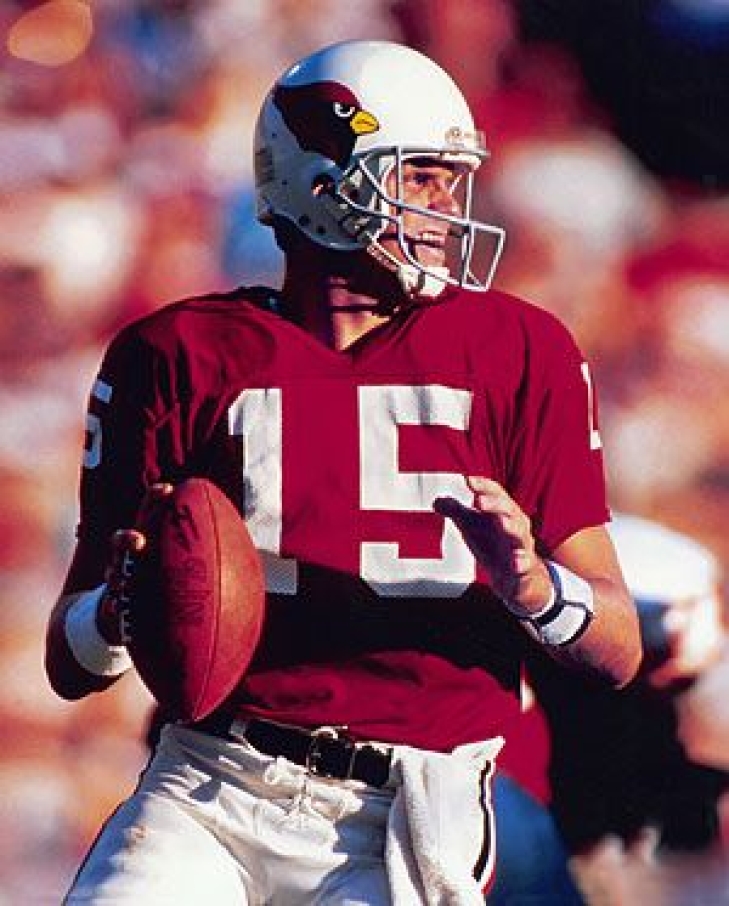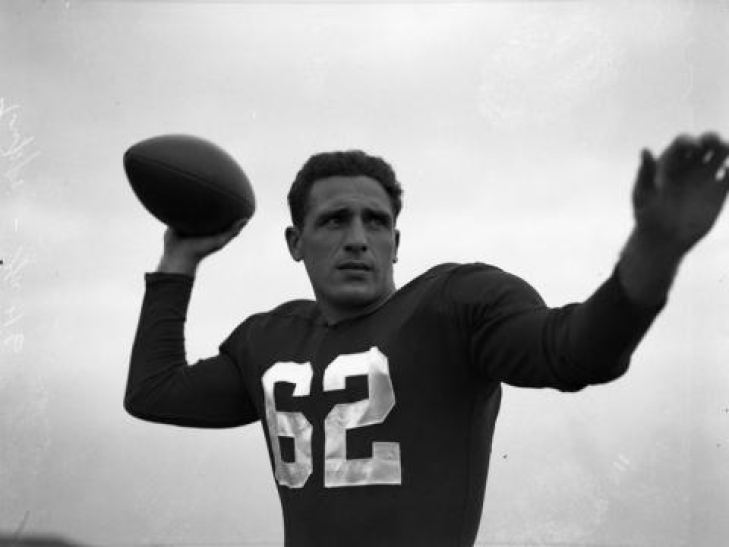Warning: Attempt to read property "params" on null in /home/notinhal/public_html/plugins/k2/k2canonical/k2canonical.php on line 382
44. Freddie Joe Nunn
A First Round Pick from Mississippi, Freddie Joe Nunn seemed to bounce from Defensive End to Linebacker depending on the need in his first nine years in the NFL as a Cardinal.
A really good player but never was named a Pro Bowler or All-Pro, Nunn was at his best as a pass rusher, as shown by his 14-Sack year in 1988, the first year of the Cards' relocation to the desert. Had Nunn received a more defined and consistent role with the Cardinals and not endured legal issues (he was arrested multiple times), his profile in Cardinal history would be more significant. It also did not help that the St. Louis/Phoenix were hardly world-beaters when he played there. After nine seasons, Nunn departed for the Colts, where he played three years to close out his career.
Following Nunn's departure, he had the franchise record 66.5 Sacks, a record that stood until it was broken by Chandler Jones in 2021.
42. E.J. Junior
With the Fifth Overall Pick in the 1981 Draft, the St. Louis Cardinals selected E.J. Junior, who was the second Linebacker taken behind someone you may have heard of; Lawrence Taylor. Junior did not have Taylor’s career (who could?) but the Cardinals got a lot of good football from the eventual College Football Hall of Fame inductee.
Junior won the starting job during the season and, by the mid-80s, was one of the best interior Linebackers in the NFC. His best season was in 1984 when he was a First Team All-Pro and began a two-year run of Pro Bowls. From 183 to 1985, Junior had eight Interceptions and 19.0 Sacks, and though he tailed off afterward, he was still a solid NFL player.
He left the Cardinals behind in 1988, joining Miami as a Free Agent. The Cardinals were not significant in the 1980s, but this does not detract from Junior's work in St.Louis/Phoenix.
36. Tim McDonald
Tim McDonald was an All-American at USC, where he continued the tradition of excellent Safeties the Trojans produced. The St. Louis Cardinals used their Second Round Pick in 1987 to get him, and it was as a Cardinal where he spent the first half of his career.
McDonald only played three Games as a rookie, but as the team relocated to Phoenix, he earned the starting Strong Safety job, which he held for five years. Leading the NFL in Forced Fumbles (4) in 1988, McDonald went to his first Pro Bowl, accruing career-highs in Tackles (155) and Interceptions (7). Opponents knew to stay away from McDonald afterward, thus reducing his tackling metrics, but he still made two more Pro Bowls (1991 & 1992) while running the secondary.
McDonald signed with the San Francisco 49ers in 1993, where he won a Super Bowl and went to three more Pro Bowls. He had half of his 40 Interceptions with the Cards.
35. Neil Lomax
A superstar at Portland State, Neil Lomax allegedly set 90 records while he was the Vikings Quarterback. This afforded him a rarity for a Portland State player, a high draft pick (2nd Round in 1981) in the NFL Draft.
Lomax saw action in his inaugural year, learning from the aging Jim Hart, and was an All-Rookie. Playing in the then hyper-competitive NFC East, the Cardinals Quarterback only had two winning seasons and one Playoff Game, but when he was on, he was as good as anyone in the NFL. Twice named to the Pro Bowl, Lomax led the NFL in Pass Completions (275) and Passing Yards (3,387) in 1987 and had 22,771 Yards with 136 Touchdown Passes overall.
An arthritic hip forced Lomax to sit out all of the 1989 Season, and before the next campaign, he retired due to its severity.
22. Luis Sharpe
A Cardinal for the entirety of his 13-year NFL career, Luis Sharpe was the second Offensive Lineman taken in the 1982 NFL Draft, behind only Hall of Famer Mike Munchak. It is a safe assumption that the Cards got the second-best Offensive Lineman of that draft.
Playing for the team while they had geographic designations of St. Louis, Phoenix, and Arizona, Sharpe started all 189 of his Games at Left Tackle, achieving Pro Bowls in three straight years (1987-89) while obtaining Second Team All-Pros in 1988 and 1990. He rarely missed games, stayed relatively healthy for most of his career, and was the building block for over a decade that the Cardinals attempted to build around. The team was not that successful in that regard, as he only appeared in one playoff game, but Sharpe was their top lineman for many years and deserved this spot.
3. Charley Trippi
Charley Trippi was a coveted player from the University of Georgia, and the New York Yankees of the upstart All-American Football Conference thought they had him locked up. The Chicago Cardinals, who drafted him first overall, earned his services when Cardinals owner Charles Bidwell signed him to what was a massive contract at the time, $100,000 over four years.
Trippi was the heart of what would become Chicago's "Million Dollar Backfield," as a rookie in 1947, he would lead the Cardinals to an NFL Championship. Incredibly versatile, Trippi could play any offensive skill position and excelled at rushing, passing, and punting. He played until 1955, finishing his career with the Cardinals and amassing 4,827 Yards From Scrimmage.
Trippi was selected for the 1940s All-Decade Team and the Pro Football Hall of Fame in 1968. The Cardinals selected Trippi for their inaugural Ring of Honor class in 2006.
6. Aeneas Williams
The Professional Football career of Aeneas Williams was extraordinary, as he was a walk-on at Southern during his junior year and two years later would be a third round pick.
Williams was not on anyone's radar for greatness, but that is what he became in a career that began with the Cardinals. Winning the starting Cornerback on the right side, Williams was an All-Rookie with six picks and finished third in Defensive Player of the Year honors. The team moved him to the left side, where he was named a Pro Bowler six years in a row (1994-99), with First Team All-Pro honors coming in 1995 and 1997. Williams also led the NFL in Interceptions in 1994 (9) and had 55 over his career, 44 as a Cardinal.
The rebuilding Cards would trade Williams to the St. Louis Rams, where he would win a Super Bowl.
Williams entered the Cardinals Ring of Honor in 2008 and got the Pro Football Hall of Fame call in 2014.


